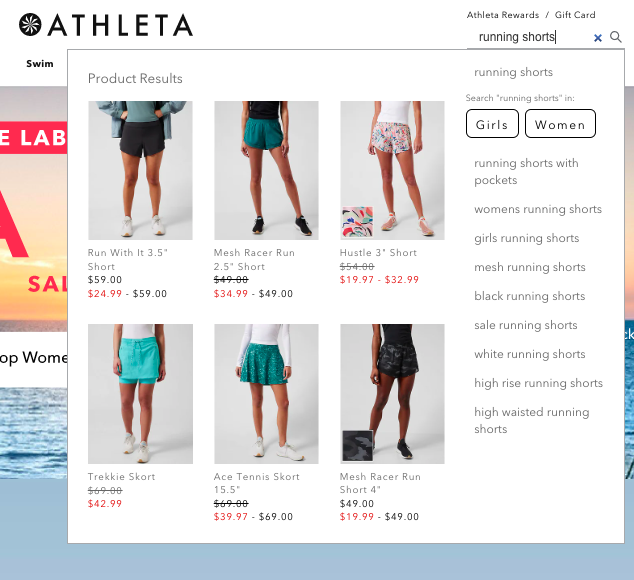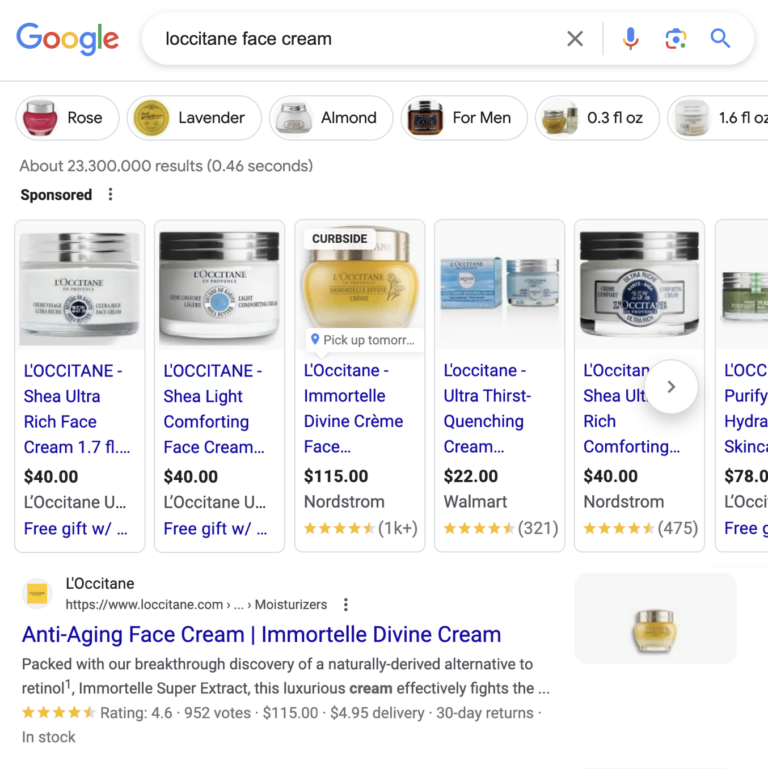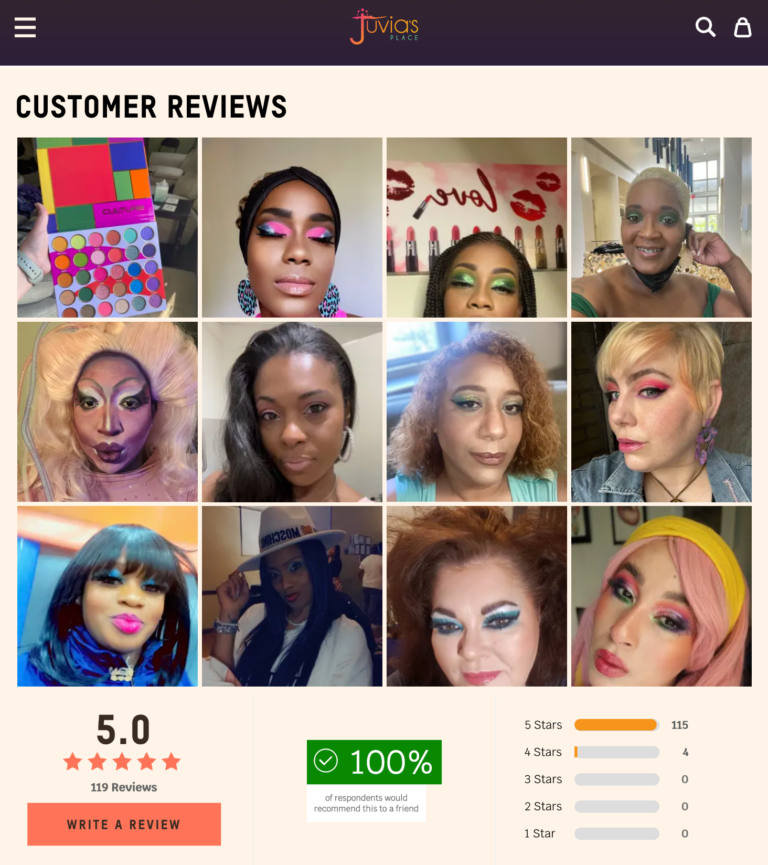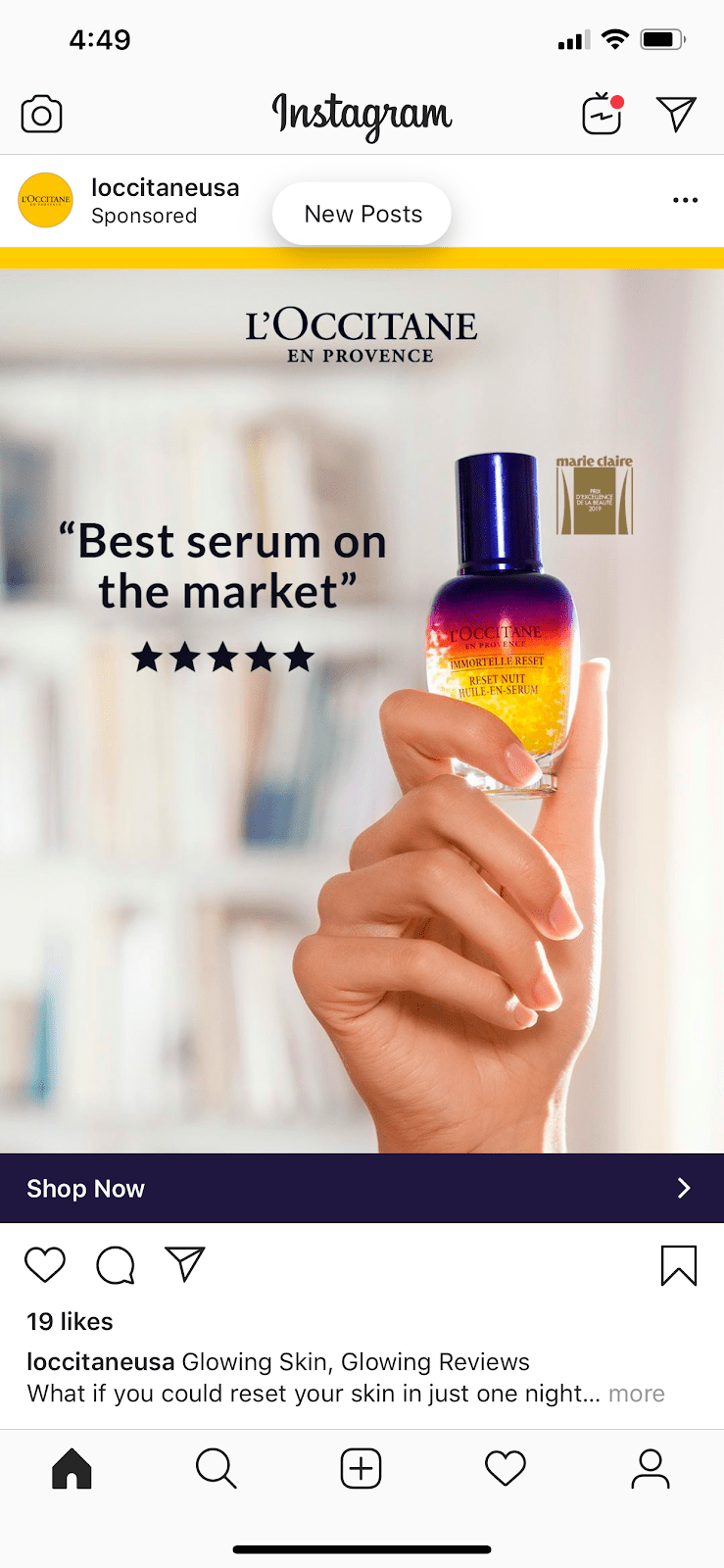Beauty Shoppers’ Top Considerations
Beauty shoppers consider many factors when deciding whether or not to purchase a beauty product. But one factor rises to the top: user-generated content.
88% of consumers consider ratings and reviews when making a beauty purchase decision; 67% consider photos and videos from other shoppers.
In fact, user-generated content is even more impactful than recommendations from family and friends. 63% of shoppers say this is something they consider when deciding whether or not to buy a beauty product.
Now, we’ll zoom in to take a closer look at how some of these top factors impact beauty shoppers’ behavior.
Customer Ratings and Reviews
Ratings and reviews top the list of factors impacting beauty shopping behavior.
In fact, beauty shoppers have come to depend on this content throughout the purchase journey.
At the top of the funnel the majority of consumers use ratings and reviews to discover new beauty products. 70% of beauty shoppers use this content to learn about products they’ve never purchased before.
In addition, ratings and reviews are the factor consumers trust the most. 89% indicate they trust ratings and reviews when it comes to deciding whether or not to buy beauty products.
Customer Photos and Videos
Beauty – perhaps more than any other product category – is highly visual in nature. Seeing what a product looks like on others is key to determining whether the product will fit a shopper’s needs.
Brand-provided imagery is important. But seeing a product being used by real people in real life is even more powerful.
So it’s not surprising that consumer-generated photos and videos are the #2 consideration for beauty shoppers.
User-generated imagery is an important tool for product discovery. Over half (53%) of shoppers say they turn to this content to learn about beauty products they haven’t purchased before.
In addition, 67% of consumers trust user-generated imagery when it comes to making beauty purchase decisions.
Recommendations from Family/Friends
Traditional word of mouth continues to be a top consideration for beauty shoppers.
Nearly half (49%) of beauty shoppers rely on recommendations from family and friends to learn more about products they’ve never purchased before. What’s more, 70% trust these recommendations when it comes to determining whether to purchase a beauty product.
Recommendations from In-Store Specialists
Brick-and-mortar beauty shopping continues to thrive. And recommendations from in-store associates are a key consideration for beauty shoppers.
A third (32%) of beauty shoppers use recommendations from store specialists to learn more about new-to-them products. And nearly three in 10 (29%) trust these recommendations when it comes time to make a purchase decision.
Social Media
Social media sites are some of the most heavily used websites and apps on the internet. Consumers use social media to stay in touch with family and friends. But they also use these sites to learn about beauty products.
Instagram is the top channel for consumers to learn about beauty products they’ve never purchased before – followed closely behind by TikTok.
In addition, a significant number of consumers trust social media channels when it comes to deciding whether or not to purchase a new-to-them beauty product. Instagram is the most trusted channel, with TikTok close behind.
Site Search Results
Typically, a beauty shopper doesn’t navigate directly to a product page. More often, they land on a homepage – for example, Ulta.com or Amazon.com – and then type in a search query.

The search results on retailer sites are an important tool for beauty product discovery. A third (33%) of consumers use search results on retailer sites to learn more about beauty products they’ve never bought before.
In addition, 33% trust the search results from a retailer site when it comes to making a purchase decision about a beauty product.
Search Engine Results
In many cases, a beauty shopper’s purchase journey starts on Google or another search engine. The results on that search engine are a key consideration.

37% of beauty shoppers use Google search results as a way to learn about new beauty products they’ve never purchased before. And 29% trust these results when it comes to making a purchase decision.
Influencers
Today, many beauty brands and retailers invest in influencer strategies. And for good reason. A significant portion of beauty shoppers say they consider influencer endorsements when shopping for beauty products.
A quarter (25%) of shoppers use influencer endorsements as a tool to learn about beauty products they’ve never purchased before. And 22% trust these endorsements when it comes to making a purchase decision.
Other Marketing Channels
In the past, many beauty brands and retailers invested heavily in traditional marketing channels like TV commercials and celebrity endorsements. Some brands continue to do so.
Yet, these traditional channels no longer have the influence they once did.
In addition, trust in these marketing channels is relatively low.
User-Generated Content Tops the List of Purchase Considerations for Beauty Shoppers
Today, 88% of beauty shoppers say they consider ratings and reviews when it comes to making decisions on whether or not to purchase a beauty product. And 67% of beauty shoppers consider user-generated photos and videos.
User-generated content is an important tool for product discovery. And it’s a source of information consumers trust.
Make it a priority to collect and display a high volume of reviews across your entire product catalog. And if you’re not already, start collecting visual content as part of reviews. Being able to see your products being used by real people in “real life’” will boost shoppers’ confidence – and their likelihood of making a purchase.

Traditional Marketing Tactics Aren’t as Powerful as They Once Were
In the past, beauty brands and retailers sunk their marketing dollars into traditional marketing channels like TV commercials and print ads. Today, these initiatives aren’t as impactful on shopper behavior as they once were.
That doesn’t mean you should completely remove these traditional tactics from your marketing strategy. However, consider looking for opportunities to incorporate user-generated content into their traditional marketing tactics. For example, include star ratings for products featured in an email campaign. Or, incorporate a snippet of a positive review into a print ad. This social proof will capture more shoppers’ attention – and give them the confidence they need to convert.


